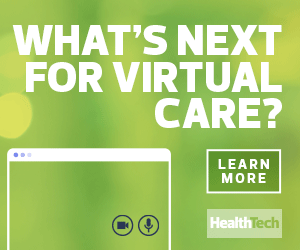While care related to COVID-19 continues to be the nation’s healthcare priority, leaders at Northwell Health didn’t want to lose sight of other essential services, such as emergency and preventive care. They also wanted to support patients’ well-being when it came to financial stress during a difficult time.
These ongoing challenges prompted Northwell to create two strategies: one to ease the transition back to in-person care and one to alleviate the burden of hospital bills.
“We wanted the community to focus on healing, staying healthy and coping with quarantine mentally and physically,” said Corrie Quaranto, vice president of customer experience at Northwell Health, who discussed recent efforts with Holly Koehler, the New York organization’s vice president of patient access services, in a July 14 webinar.
Today, Northwell hospitals have returned to roughly 80 percent of normal activity, practice volumes are up to 90 percent and steadily increasing, and new-patient visits are on the rise.
The percentage of visits served through telehealth — which Koehler described as an indicator of patients’ comfort with in-person care — has declined from about 30 percent during the coronavirus peak to 13 percent.
She and Quaranto spoke about several new strategies used during the transition.
1. Provide Messaging and Outreach Via Multiple Touchpoints
With New York as a coronavirus epicenter, and Northwell managing 3,500 patients per day at the peak, leaders made the assumption that residents might be leery of visiting any hospital.
Yet with Northwell’s 23 hospitals and approximately 800 outpatient locations, more than 11 million people look to the system for healthcare.
That community became the focus of a multichannel strategy designed to communicate that Northwell facilities were safe environments where patients could feel comfortable, Koehler said.
READ MORE: 4 Effective Ways to Communicate During Health Emergencies
First, staff used a survey to assess the community’s readiness to seek care. They developed print, TV and radio ads; social media campaigns; emails; digital displays; regional and pediatric-focused campaigns; and other tools — all of which highlighted COVID-related precautions at Northwell facilities and explained how to safely obtain emergency care.
“It was most important for us to have a pulse check for our community and pace our communications to that,” Koehler said.
2. Leverage Trust and Personal Communication to Guide Care
Using their established rapport, Northwell physicians reached out to patients directly, and staff contacted individuals who had canceled appointments to offer telehealth as an alternative — with both parties emphasizing the value of continued care. Increased safety measures and expanded hours supported an increase in onsite visits.
Several digital tools supported the organization’s Safe Care campaign, including a chatbot focused on COVID-19, an enhanced digital appointment request for telehealth and digital forms designed to make in-person visits more efficient.
A 24-hour coronavirus call center gave patients a place to ask questions and provided a window into their concerns — part of the strategy to keep a pulse on community sentiment and align messaging accordingly.
“Our primary concern was to make sure patients weren’t putting off needed care that would have a negative impact if we didn’t get to them sooner,” she said.
3. Promote New Billing, Payment Strategies to Boost Patient Loyalty
On the business side, Northwell wanted to help mitigate the pandemic’s financial impact. Leaders recognized that unemployment, business shutdowns, remote education and other factors had put enormous strains on the community, said Quaranto.
When the pandemic began, Northwell mobilized 180 employees for remote payment collection and created a portal for online payments.
READ MORE: Learn how a major healthcare organization scaled up telehealth to meet growing demand.
“We quickly worked with Legal, Compliance and IT to get our advisers the ability to collect remotely,” said Quaranto. “This enabled seamless servicing and business continuity.”
For patients reluctant to use the portal, 10 advisers were dispatched to collect payments in person at a location that allowed for ample social distancing. Northwell has also developed a customer-centric approach and trained advisers on financial sensitivity.
Other strategies included temporary holds on COVID-related and telehealth bills; 60-day holds on open balances for patients with financial hardship, with options for extensions and interest-free payment plans; longer time frames and lower monthly payments for plans; and flexibility for managers to develop custom solutions for individual patients.
“Instead of calling to collect, we were calling to have a conversation on how we could be there for them,” Quaranto said.











